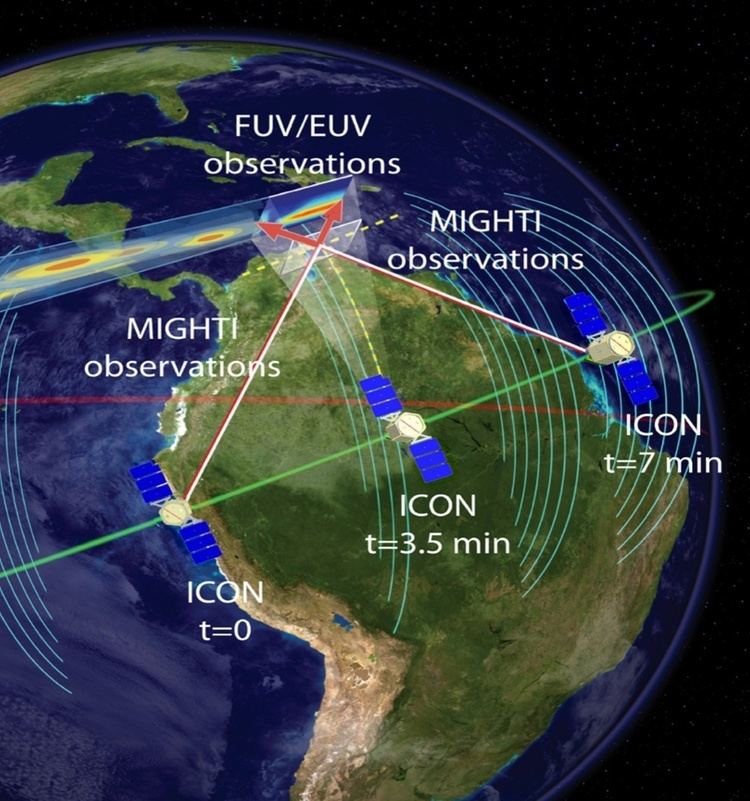Mission type Earth observation Website At ssl.berkeley.edu BOL mass 290.8 kg | Operator UC Berkeley and NASA Mission duration 2 years (planned) | |
 | ||
Manufacturer UC Berkeley and Orbital ATK | ||
The Ionospheric Connection Explorer] (ICON) is a satellite designed to investigate changes in the Earth's ionosphere and is scheduled for launch in the summer of 2017. The mission is being led by the University of California, Berkeley and will be a new addition to NASA's Explorer program. ICON will provide NASA’s Heliophysics Division with a new capability to understand the tug-of-war between Earth’s atmosphere and the space environment. In the "no man's land" of the ionosphere, a continuous struggle between solar forcing and Earth’s weather systems drive extreme and unpredicted variability. ICON will investigate the forces at play in the near-space environment, leading the way in understanding disturbances that can lead to severe interference with communications and GPS signals.
On April 12, 2013, NASA announced that ICON, along with Global-scale Observations of the Limb and Disk (GOLD), had been selected for launch in 2017, with the cost capped at $200 million, excluding launch costs. The principal investigator of ICON is Thomas Immel at the University of California, Berkeley.
Mission concept
Once launched, ICON will perform a two-year mission to observe conditions in both the thermosphere and ionosphere. ICON will be equipped with four instruments: a Michelson interferometer, built by the United States Naval Research Laboratory, will measure the winds in the thermosphere; an ion drift meter, built by University of Texas at Dallas, will measure the motion of charged particles in the ionosphere; and two Ultraviolet imagers built at UC Berkeley will observe the airglow layers in the upper atmosphere in order to determine both ionospheric and thermospheric density and composition.
